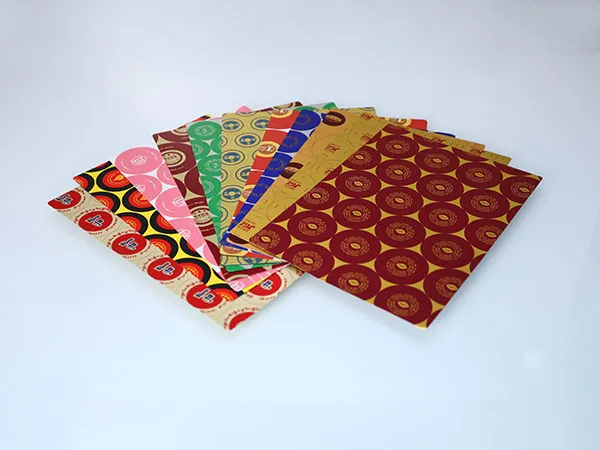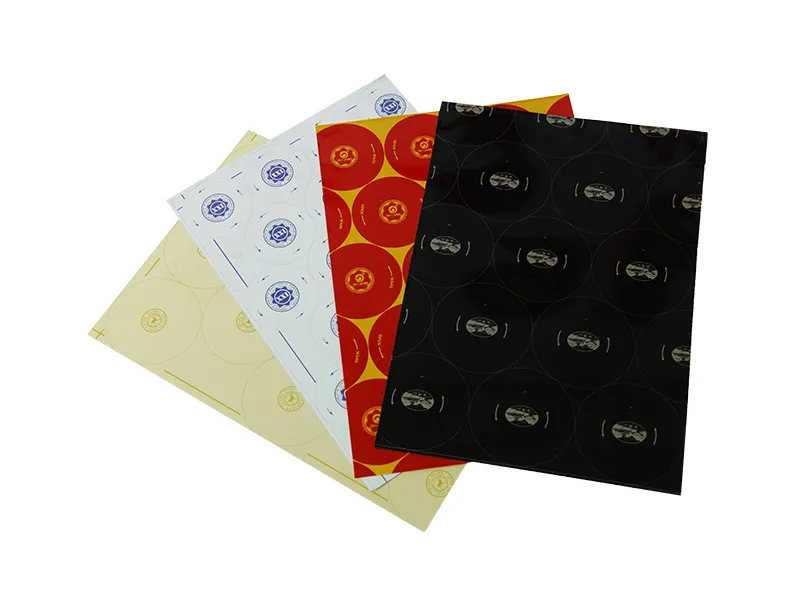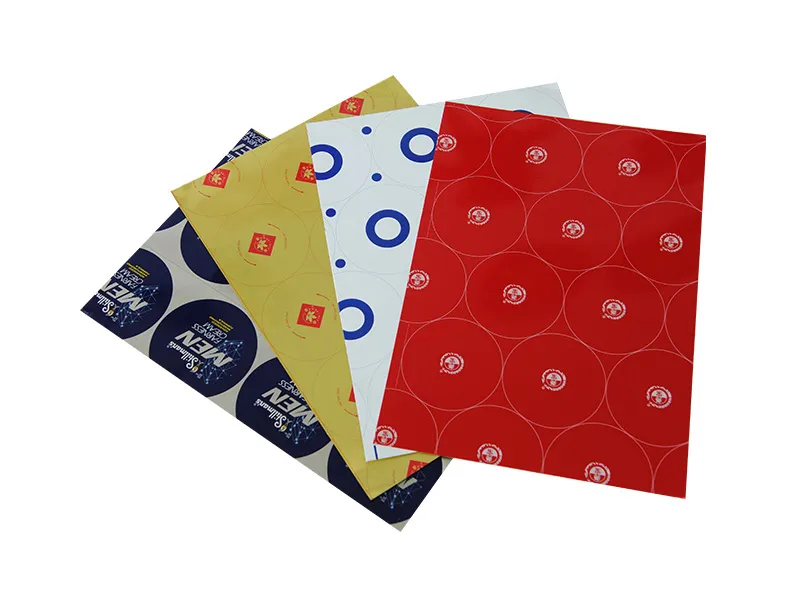2025-08-25 03:39:35
Customizing printed aluminum sheets is a fantastic way to create durable, high-impact visuals for everything from architectural panels and signage to fine art and custom products. Here is a comprehensive guide on how to do it, broken down into the methods, the step-by-step process, and key design considerations.

The first step is to choose the right printing technology for your project, as each has its own strengths in terms of durability, appearance, and cost.
1. Dye Sublimation (Most Popular for Fine Art & Photos)
This method produces stunning, photo-realistic results with incredible depth and vibrancy.
How it Works: Your design is printed onto special transfer paper with sublimation inks. The paper is then placed on a polymer-coated aluminum sheet and subjected to high heat and pressure. The ink turns into a gas and permeates the coating, becoming a permanent part of the surface.
Pros:
Exceptional photographic quality with continuous tones.
Highly durable, scratch-resistant, and easy to clean.
The image is in the surface, not on top of it.
Cons:
Requires specially coated aluminum sheets.
Standard inks can fade with prolonged, direct UV exposure (though UV-resistant options are available).
Best For: Fine art prints, high-end photography, interior signage, decorative panels, and custom backsplashes.
2. UV Direct Printing (Most Versatile)
This is a robust method where a flatbed printer applies ink directly onto the aluminum surface.
How it Works: The printer jets UV-curable ink directly onto the aluminum. A powerful UV light follows the print head, instantly curing (drying) the ink, making it hard and durable.
Pros:
Can print on almost any type of aluminum (brushed, mill finish, anodized, painted).
Excellent UV resistance, making it ideal for outdoor use.
Can print with white ink, allowing for vibrant colors on non-white surfaces (like brushed aluminum).
Can create textured or embossed effects (3D printing) by layering ink.
Cons:
The image sits on top of the surface, so it can be scratched with enough force.
May not have the same "depth" or continuous tone quality as dye sublimation.
Best For: Outdoor signage, architectural panels, machine faceplates, point-of-purchase displays, and printing on textured or brushed metal.
3. Screen Printing
A traditional method that is highly effective for simple, bold graphics, especially in large quantities.
How it Works: A mesh screen is used to transfer ink onto the aluminum, with a stencil blocking out areas where the ink should not go. Each color requires a separate screen and pass.
Pros:
Extremely durable and long-lasting inks.
Very cost-effective for large production runs of the same design.
Produces thick, opaque, and vibrant spot colors.
Cons:
Not suitable for photographic images or complex, multi-color designs.
High setup costs for each color make it expensive for small quantities.
Best For: Industrial labels, equipment panels, warning signs, and branded logos in one or two colors.
4. Digital Anodizing (Most Durable)
This process embeds a digital image into the protective anodic layer of the aluminum itself.
How it Works: The aluminum is anodized, which creates a porous oxide layer. A digital printer then jets a special dye into these open pores. Finally, the sheet is sealed (usually with hot water), trapping the image permanently beneath the super-hard anodic surface.
Pros:
The most durable option available. The image is completely protected from abrasion, chemicals, and UV damage.
The metallic sheen of the aluminum can show through the image.
Cons:
The most expensive process with longer lead times.
Color matching can be less precise than other methods.
Best For: Architectural exteriors, public art installations, military/aerospace nameplates, and any application requiring extreme longevity and durability.

Follow these steps to take your idea from a concept to a finished printed aluminum sheet.
Step 1: Concept and Design
Define Your Goal: What is the purpose of the panel? Is it artwork, a sign, a backsplash? This will influence your choice of printing method and aluminum finish.
Create Your Artwork: Use professional design software.
For logos, text, and geometric patterns: Use vector-based software like Adobe Illustrator or CorelDRAW. This ensures your design can be scaled to any size without losing quality.
For photographs or complex graphics: Use raster-based software like Adobe Photoshop. Make sure your image is high-resolution.
Step 2: Digital File Preparation (Crucial for a Good Result!)
This is where most mistakes happen. Follow these guidelines carefully.
Resolution: For raster images, use a resolution of 300 DPI (Dots Per Inch) at the final print size. A low-resolution file will look blurry and pixelated when printed.
Color Mode: Set your file's color mode to CMYK (Cyan, Magenta, Yellow, Black). This is the standard for professional printing. Your computer screen uses RGB (Red, Green, Blue), so colors may look slightly different when printed.
File Format: Save or export your final design in a print-ready format. The best options are:
PDF (Press Quality): The industry standard. It embeds fonts and images.
AI (Adobe Illustrator) or EPS: Best for vector files.
TIFF: Best for high-resolution raster images.
Bleed: If your design extends to the very edge of the sheet, you must add a "bleed." This means extending your background pattern or color 0.125 inches (3mm) beyond the final trim line on all sides. This ensures there are no accidental white edges after the sheet is cut to size.
Safe Zone: Keep all important text and logos within a "safe zone," typically 0.25 inches (6mm) inside the final trim line. This prevents them from being cut off.
Step 3: Choose Your Aluminum Sheet
Finish: The surface finish dramatically affects the final look.
White Gloss/Matte: The most common for dye sublimation. Provides a clean base for true-to-color printing.
Brushed Aluminum: The grain of the metal shows through the printed areas, creating a beautiful, modern, and textured look. Any white in your design will appear as the metallic silver of the panel. (Use UV printing with a white ink base layer if you need opaque white on a brushed surface).
Clear (Silver) Gloss/Matte: Gives a metallic sheen to the entire image.
Thickness: Common thicknesses range from 0.025" (thin labels) to 0.125" (rigid architectural panels). A standard thickness for wall art is around 0.045" (1.14mm).

Step 4: Find a Professional Printing Service
Unless you are investing in your own equipment, you will need a professional service.
Search Online: Use terms like "custom aluminum printing," "dye sublimation metal prints," or "UV printing on metal."
Local Sign Shops: Many local sign and graphics companies have flatbed UV printers.
Ask for Samples: Always request a sample of their work on the specific aluminum finish you want. This lets you see the quality, color accuracy, and durability firsthand.
Submit Your File: Follow their specific instructions for file submission. Most companies have a file upload portal on their website.
Step 5: Proofing and Approval
The printer will send you a digital "proof" (a PDF preview) of your design, showing the trim lines, bleed, and safe zones. Review this proof carefully! Check for typos, placement errors, and any other issues. Once you approve the proof, the project moves to production.
Step 6: Production and Finishing
The printer will produce your custom sheet. After printing, they can also perform additional finishing services like:
Cutting: To precise sizes or custom shapes.
Drilling: For mounting holes.
Bending: For creating boxes or angled panels.
Adding Mounts: Such as float mounts or standoffs for wall art.
The above is all about customizing printed aluminum plate patterns. When customizing patterns, it is recommended to:
Design Preparation: Always use high-resolution images and graphics for the best results. For most digital printing methods, a high-resolution file (like a vector file or a high-DPI image) is essential to ensure clarity and detail.
Surface and Finish: The type of aluminum finish (e.g., matte, glossy, brushed) will significantly affect the final look. Brushed aluminum will show a metallic sheen in the unprinted areas, while a white-coated surface will make colors appear more vibrant.
Professional Services: Many companies specialize in custom aluminum printing and fabrication. They can offer guidance on the best printing method for your project and provide services like precision cutting, bending, and other finishing touches.